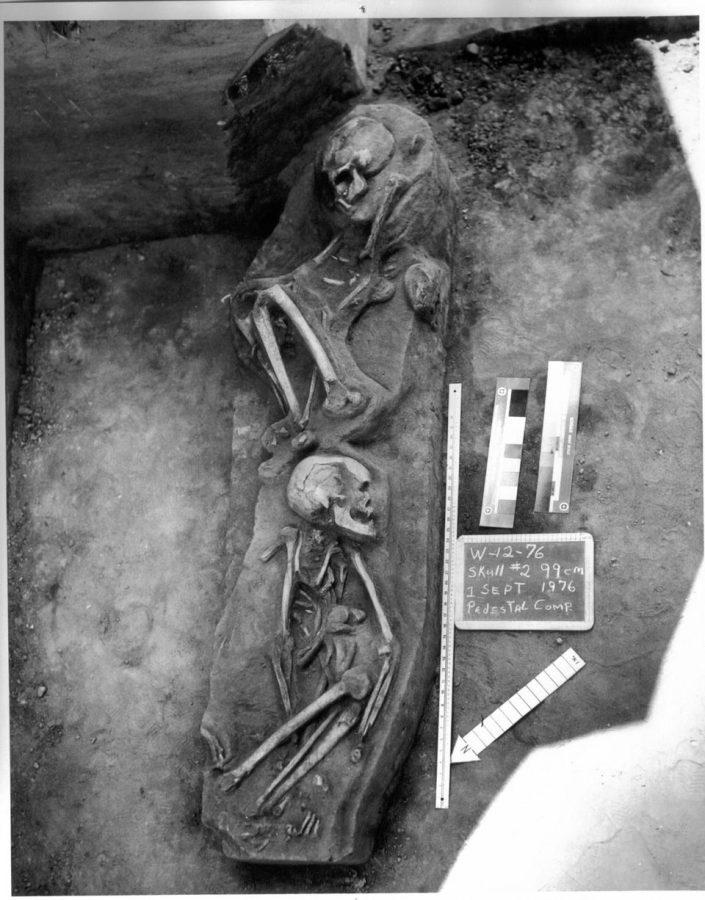In 1976, Native American remains were unearthed beneath what is now the UC San Diego chancellor’s residence. The University House Burial Case offers an opening for examining the extent of legal pluralism in regards to indigenous rights; under our current legal system, does the tribe or federal government have the final say?
“Well, you have to take a step back. What if these are your people’s bones?”
After a moment of pause she sighed, turning toward me and looking into my eyes. “Of course it is for science … but with everything [that happened], it is very hard [for Native Americans] to build trust in [the] federal government.”
Professor Heather Ponchetti Daly, a lecturer from the UC San Diego ethnic studies department, is a tribal woman who grew up in the Diegueño Kumeyaay reservation in north San Diego county. She told me about her personal stand on the issue of scientific research and analysis conducted on Native American remains, specifically about the University House Burial Case.
In the summer of 1976, beneath what is now the chancellor’s residence, known as the University House located on the oceanside cliffs of La Jolla, two human remains were unearthed.
Later, these Paleo-indian remains were dated to be 8,977 to 9,603 years old, making them some of the oldest in the nation. In the years since their discovery, the Native American remains have travelled to numerous locations all around the nation, including several universities and museums. Today, they are stored at the San Diego Archaeological Center by mutual agreement between UCSD and the Kumeyaay Cultural Repatriation Committee.
You might wonder why these remains were transferred from place to place throughout the decade. Since these remains were discovered on UCSD property, why couldn’t they just be kept at our school for scientific studies? Or, since these human remains were identified as Native American, why haven’t they been returned to the rightful Native American tribe — in this particular case the Kumeyaays, who are aboriginal to the land where the remains were discovered?
Before the Native American Graves Protection and Repatriation Act, these remains were under dispute regarding who should take possession of them. The act expressly requires that “culturally unidentifiable” remains be repatriated to the Indian tribes who are aboriginal to the land where the remains were discovered. After it was passed, the university’s human-remains policies were designed to comply with NAGPRA.
However, NAGPRA itself is conflictory. NAGPRA expressly requires that “culturally unidentifiable” remains be repatriated to the Indian tribes who are aboriginal to the land where the remains were discovered; however, according to 25 U.S.C. § 3005, it does not govern the disposition of remains that are not determined to be “Native American.” Therefore, determining the Native American identity of these remains became the main focus of this case. However, what was also prominent in the process of repatriation was the extent of legal pluralism. This is defined as the existence of both federal and Indian legal systems that determine which party has final jurisdiction over the human remains.
Read More:
The 0.43%: Native Americans at UCSD
UCSD Sued Over Human Remains
The Ocean Lovers Club and Their Mission to Clean Up The Oceans
So, what are the rights and wrongs in dealing with these scientifically and culturally valuable remains?
Tribal nations exist within the United States, but how are they “nations within a nation” and what legal powers do they possess?
The Supreme Court case Cherokee Nation v. Georgia of 1831 (in which the Cherokee Nation sought a federal injunction against laws passed by the U.S. state of Georgia that deprived them of rights within state boundaries) describes tribes as “domestic dependent nations,” meaning that the tribal nations are self-governing sovereign entities within their lands. However, they are subject to Congress’ plenary power over Indian tribes, with “the supreme authority to modify or even eliminate their powers of self-governance.”
Professor Ross Frank from the UCSD ethnic studies department, a respected expert in Native American studies, reflected on legal pluralism and the hardship of determining the jurisdiction of federal law on tribal lands.
“The Supreme Court has made it very difficult for Indians to have power over any non-Indian if they commit a crime on the reservation,” he said. “So for example, when it comes to domestic abuse or rape or anything else, because it’s a federal crime and that federal jurisdiction over non-Indians on reservations takes precedence, the tribal court can’t really do anything. And there the federal government doesn’t have any interest in actually prosecuting these these crimes.”
This pattern of crimes has occurred a multitude of times throughout history, even as recently as the Muscogee Creek Nation Land murder case. Moreover, studies show that legal pluralism gives way to a malfunctioned system of justice that encourages law-breaking, thus increasing crime rates on reservations.
The federal government’s position on the legal pluralism dispute is very clear — to make tribal nations the authority on the land given by the federal government and to give federal law precedence over tribal laws. Tribal governments, on the other hand, aspire to maintain jurisdiction over crimes committed on their reservations and over the law enforcement process that follows.
Over the years, a recurring theme of conflict in a majority of treaties between the federal government and tribal nations reflects their power dynamic.
While competing for land, both sides have tried to come up with a resolution to address their conflicting interests through treaties. However, as an attempt to tackle conflict with a final solution, a single treaty would often fail to be enacted within a short period of time. This gives rise to a series of treaties with policies going back and forth like a pendulum. The key issue that both parties wish to resolve is the extent of legal pluralism.
Such legal pluralism also affects the University House Burial case’s final ruling. Although Congress has the ultimate power to modify or even eliminate the power of tribal governments, the sovereign immunity of Indian tribes under NAGPRA can not be waived. According to the Constitution and the newly rectified NAGPRA clause about repatriation of human remains, the Kumeyaays have rightful sovereignty over their remains. The conversation surrounding the University House Burial case has gradually diminished with the Supreme Court’s rejection to hear and review the case, but it leaves us with some important contemplation. The manifestation of legal pluralism is now a challenge for our generation.
Photos courtesy of Jan Austin.







